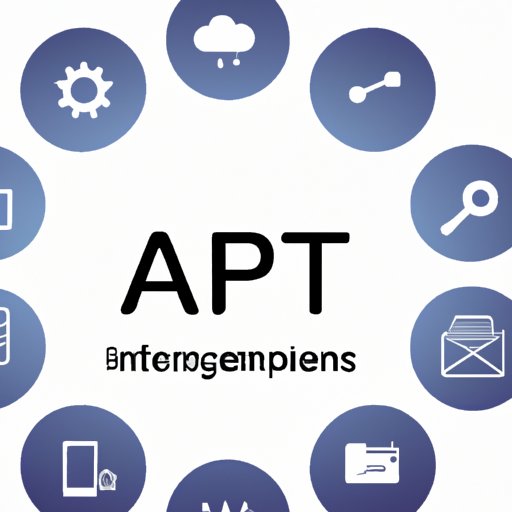Introduction: What is an API?
API stands for Application Programming Interface. In simple terms, an API is a set of instructions that allow two or more applications to communicate with each other. An API defines how software components should interact with one another and any specific details related to those interactions.
In the world of technology, an API is a set of protocols, routines, and tools used by developers to build software applications. It acts as a bridge between different software applications, making it easier for developers to create programs that can interact with each other.

A Comprehensive Guide to Understanding APIs In the Tech Industry
In order to understand APIs in the tech industry, it’s important to know what types of APIs are available and what benefits they offer.
What are the Different Types of APIs?
There are four main types of APIs: SOAP, REST, Webhooks, and GraphQL.
- SOAP (Simple Object Access Protocol) is a messaging protocol that enables communication between two applications over the internet. It is typically used for enterprise-level applications.
- REST (Representational State Transfer) is a software architecture style that enables communication between two or more applications. It is often used for web-based applications.
- Webhooks enable communication between two applications using a “push” system. When a certain event occurs, such as a user creating a post, the application sends out a notification to all connected applications.
- GraphQL is a query language for APIs that enables developers to retrieve data from multiple sources. It is often used for mobile apps.
What are the Benefits of Using APIs in Technology?
Using APIs in technology offers a variety of benefits, including enhanced interoperability, improved security, and increased efficiency.
Examining the Benefits of Using APIs in Technology
How do APIs Facilitate Interoperability?
Interoperability is a key benefit of using APIs in technology. APIs enable applications to communicate with each other, allowing developers to access data from multiple sources and create powerful, integrated applications. This makes it easier for developers to create applications that can interact with each other, resulting in more efficient and effective development processes. According to a study conducted by Forrester, “The use of APIs helps companies to increase their agility, reduce costs, and build better customer experiences.”
What Are the Benefits of API Security for Technologists?
API security is another key benefit of using APIs in technology. APIs allow developers to control which applications can access data, ensuring that only authorized users have access to sensitive information. Additionally, APIs provide built-in authentication and authorization mechanisms that help protect applications from malicious attacks. This makes it easier for developers to create secure applications and ensure that data is protected. As stated by Gartner, “API security is essential for protecting data, maintaining compliance, and preventing cyberattacks.”

Conclusion: Summary of What an API Is and How It Works in Technology
An API is a set of protocols, routines, and tools used by developers to build software applications. It acts as a bridge between different software applications, making it easier for developers to create programs that can interact with each other. There are four main types of APIs: SOAP, REST, Webhooks, and GraphQL. Using APIs in technology offers a variety of benefits, including enhanced interoperability, improved security, and increased efficiency.
In conclusion, APIs are an essential part of the tech industry and can be used to create powerful, integrated applications. By leveraging the benefits of APIs, developers can create secure and efficient applications that can interact with each other.
(Note: Is this article not meeting your expectations? Do you have knowledge or insights to share? Unlock new opportunities and expand your reach by joining our authors team. Click Registration to join us and share your expertise with our readers.)
